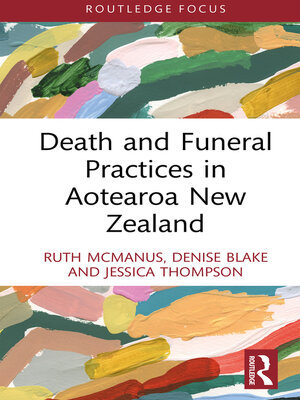Death and Funeral Practices in Aotearoa New Zealand
ebook ∣ Routledge International Focus on Death and Funeral Practices
By Ruth McManus

Sign up to save your library
With an OverDrive account, you can save your favorite libraries for at-a-glance information about availability. Find out more about OverDrive accounts.
Find this title in Libby, the library reading app by OverDrive.



Search for a digital library with this title
Title found at these libraries:
| Library Name | Distance |
|---|---|
| Loading... |
This book provides a shortform definitive reference text on the landscape and features of Aotearoa New Zealand that underpin its familiar, though country-specific, ways of caring for the dead. It provides an account of diverse funerary practices that have taken shape through the various cultures that have settled here.
In the backdrop of the colonising history of Aotearoa New Zealand, the book examines the complex legislative framework that separates Māori and non-Māori funerary legislation and practices. Examining the mixed model of provision spanning municipal, commercial, and private organisations, the book outlines various aspects of funerals, such as the care of the body, funeral arrangements, costs, and what state support is available. It also delves into the two legal ways to manage the dead: burial or cremation, with cremation now the majority option. The book explores the numbers, ownership and locations of crematoria and cemeteries before identifying the new trends influencing death care including sustainability. It then looks at how death is memorialised in Aotearoa New Zealand, including in cemeteries, for war memorialisation, and other public commemoration and memorialisation.
This book will be of interest to the growing body of local authority planners, researchers, and funeral professionals who must be responsive to and provide their services in complex multi-cultural contexts. As the scope of the book is historical and contemporary death practices, it will also appeal to social historians.







